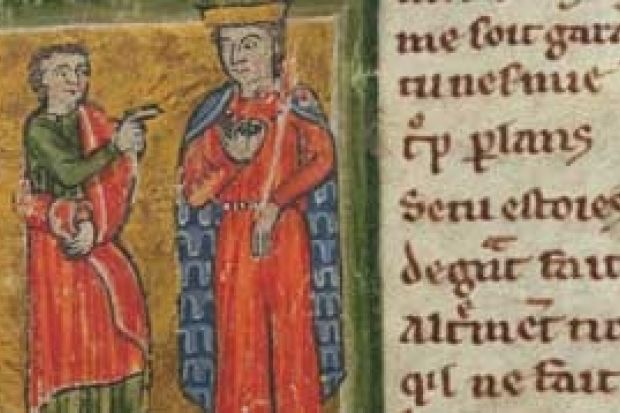A prize collection of manuscripts that throw valuable light on medieval religion, social history and women's lives has gone on display at the University of Nottingham.
Highlights of the Saints, Sinners and Storytellers exhibition include a collection by Geoffrey Chaucer's contemporary John Gower, devoted to "sins of love" such as jealousy and hypocrisy, and a French manuscript from about 1200, which may be the earliest illustrated collection of romances in the world.
Among the bawdy tales contained within is the only copy of the story of Silence, a princess brought up as a boy because only men were allowed to inherit property.
Equally striking is a fragment from the only known English life of St Zita, the Italian patron saint of housewives and lost keys, who formed the focus of an unexpected cult in the East Midlands.
Dorothy Johnston, keeper of manuscripts and special collections at Nottingham, said such items of "lay piety or devotional reading" were full of "illustrations about the 'sins' of ordinary people, such as provocative women's dress".
Almost all of the exhibition's material comes from the private library at nearby Wollaton Hall, which was built for the Willoughby dynasty in the 16th century. It remained in the family until the 1940s, when it was lodged with the university. The collection was formally acquired with the help of the Heritage Lottery Fund, enabling Nottingham to conserve, catalogue and digitise the works, revealing many details that remain invisible to the naked eye.
The exhibition will make accessible to a wider public what Dr Johnston described as "very significant manuscripts that are little known outside the core academic constituency. The skill and artistry that went into their production is clear and, although they are now fragile and challenging to display, they provide a wonderful introduction to the medieval world."
Since the manuscripts were owned by a single family for so long and were virtually untouched until recent times, they are a key source for studying medieval book-making, libraries and the culture and lifestyle of the local gentry. A parallel Wollaton Library Collection research team, based in Nottingham's department of English studies and funded by the Arts and Humanities Research Council, is working on a book investigating these themes.
The exhibition is accompanied by the launch of a major resource for the study of medieval women - a website titled Wives, Widows and Wimples, which brings together quotations from the Wollaton manuscripts and other material from Nottingham's special collections.
Saints, Sinners and Storytellers is open until 8 August.
